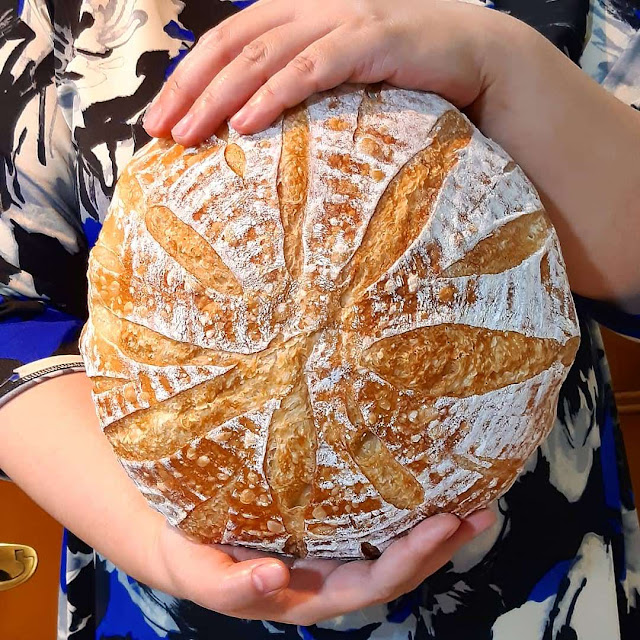The Wonderful World Of Sourdough Bread
My interest in baking artisanal sourdough bread started just this year. I had just picked up baking again and wanted to make bread at home. From my research I came across several blogs demonstrating how sourdough is made with wild yeast from your kitchen and without the aid of a mixer or minutes of backbreaking kneading of the dough by hand. That piqued my interest plus the alchemy of making a sourdough starter greatly intrigued me. Fungi are such amazing creatures.
How is sourdough bread different from other types of bread? The basic difference is that sourdough is made from wild yeast whereas other bread is made from commercial yeast. Although they both contain about a gram of sugar and 90 calories per small slice, sourdough bread has a lower glycemic index which makes it the ideal choice for people trying to control their blood glucose levels.
Everything starts with a good starter. There is so much to discuss about starters that it merits another blog entry. But simply put it is just a mixture of flour and water that you let sit at room temperature to pick up naturally occurring yeast and bacteria in your kitchen. It goes through a process of daily discarding and feeding with equal amounts of flour and water. You can tell the process of fermentation is happening as bubbles start to appear and the volume of the mixture increases as carbon dioxide is produced. The starter will pass through a stage that makes it smell like dirty gym socks. Eventually the wild yeasts will outnumber the bacteria and you will be left with a mixture that smells like overripe bananas. Depending on your location, a starter will mature and be ready to use in about a week or two.
 Ladies and gentlemen, meet Charlieboi and DaisyDough! My bread flour and rye flour starters which have taken permanent residency inside my refrigerator. Actually these two are scions of the two as they are fed and active jars of levain ready to be used shortly.
Ladies and gentlemen, meet Charlieboi and DaisyDough! My bread flour and rye flour starters which have taken permanent residency inside my refrigerator. Actually these two are scions of the two as they are fed and active jars of levain ready to be used shortly.Lean Sourdough Bread vs Enriched Sourdough Bread
Lean-type sourdough bread contain little to no fat and include country loaves, bagels, crusty rolls and baguettes. Making a lean sourdough bread requires very basic ingredients like flour, water, salt and the wild yeast starter. The process is an interesting mix of stretches and folds on the dough which develops its gluten (another blog entry to watch out for). After the gluten is developed it is transferred to a banneton (a basket for bread proofing) and allowed to slowly ferment in the fridge to get that distinct sour taste. Twelve (12) to eighteen (18) hours in cold retard then it is time to bake in a very hot oven (450 F). A large Dutch oven has proved very handy in baking a big boule. The enclosed environment allows for steam to form in the inner chamber thus causing the dough to expand and become airy.
Enriched sourdough bread, on the other hand, contain a considerable amount of sugar and a high percentage of fat coming from eggs, milk and butter. This type includes croissant, brioche, milk bread and rolls. They are often more sticky than lean bread and would require a little more levain and the aid of an electric mixer. They also need a longer proofing time because of all the fat and sugar added.
So is it worth all the hours of work for a loaf of bread? I would say 'yes'! Especially if you are particularly concerned about getting the distinct artisanal sour taste in your bread. Also recent findings indicate that letting the dough ferment slowly and letting lactic acid develop has helped make the gluten more digestible to gluten-sensitive individuals. Now isn't that something?








Comments